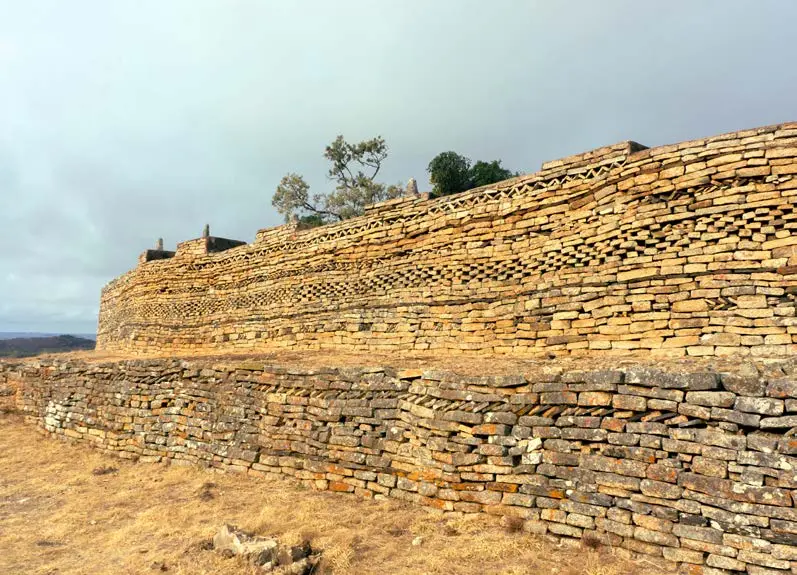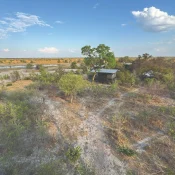
Off the beaten track in the middle of Zimbabwe
Naletale Ruins or Monuments (sometimes spelled Nalatale) are a bit off the usual tourist routes which tend to focus on the attractions in the north and the east of the country, but they are really worth a detour to explore this unique cultural site. It’s on the way to become a Zimbabwe UNESCO World Heritage Site thanks to local and international interest.
The monuments are situated in the centre of Zimbabwe around 85 kilometres south-east of Gweru or 25 kilometres east of the town of Shangani so well off the beaten track. The roads are a bit rough and there’s a walk of about 800 metres at the end so visitors need to be fairly determined and dedicated, so bring water, sun protection and maybe a few energy snacks. Also, make sure you have some sturdy boots or shoes.
Be sure to bring your camera as the ruins themselves are spectacular and the views across the remote Somabhula Flats are unmatched. In 1960 it was declared a National Monument.
Nearby, about 22 kilometres away, is the Danan’ombe Monument, which is perhaps slightly better known. Da-nan’ombe was reputedly the capital of the Kalanga Torwa State, often called Butua, in early sixteenth-century maps.
As Great Zimbabwe declined, the Torwa dynasty stepped into the spotlight. They founded Khami (near Bulawayo) in the late fifteenth century and Dhlo Dhlo (near Gweru) in the sixteenth century. Eventually, they decided to move their capital to Nalatale in the seventeenth century and so history was made.
The main structure at Naletale is relatively small, compared to Da-nan’ombe or Great Zimbabwe. It’s an oval-shaped enclosure with a maximum diameter of 53 metres built of dry-stone walling. It was probably used by the chief or local ruler as a part time residence or retreat for him and his family, or as an administrate centre for meetings and consultations. It probably also functioned as a way for the local ruler to show off his wealth and influence.
The walls are generally 2 to 2.5 metres high and vary from 1 to 3 metres in width, but the most intriguing thing about them is their elaborate design.
They feature all the designs of the Zimbabwe architectural tradition found in many other monuments, including chevrons, herringbone and chequer patterns, cords, and ironstone coloured bands, so they form an integral part of the country’s design heritage.

Researchers have suggested that the patterns might be part of a complex visual code, for example the chequer pattern would represent a man of senior status, and the herringbone pattern would represent a woman of senior status, and the chevron would represent the fertility of the earth.
Over the centuries the dry stone walls have been subject to natural subsidence and decay, especially by trees and aloes growing through the structure. More recently treasure seekers have vandalised the site looking for gold or other ancient artefacts. Restoration efforts were initially started in the 1960s but halted in 1980 due to a lack of funding.
In November 2013, the National Museums and Monuments of Zimbabwe were awarded a grant from the Ambassadors Fund for Cultural Preservation of the U.S. Department of State, for the restoration of the collapsed walls of the Nalatale ruins.
The project was completed in September 2014 and included restoration of the walls, clearing rubble, improvements to the access road and the addition of a small site museum, interpretative signs, and benches for visitors to rest for a while.
There are around 300 examples of dry-stone wall monuments across the country but Naletale is probably one of the most picturesque, both in its unique structure and architectural design, as well as the beautiful environment and the incredible views across the plains. It might be a bit off the route for most travelers, but it’s worth the diversion to appreciate the local heritage and listen to the whispers of past cultures.
From: Destination ZW 12
All Categories
Recent Posts
Kazuma Safari Camp –
Kariba’s Kumabirira Lodge Is The Perfect Hideaway
Contact Us
+263 789 532 918




